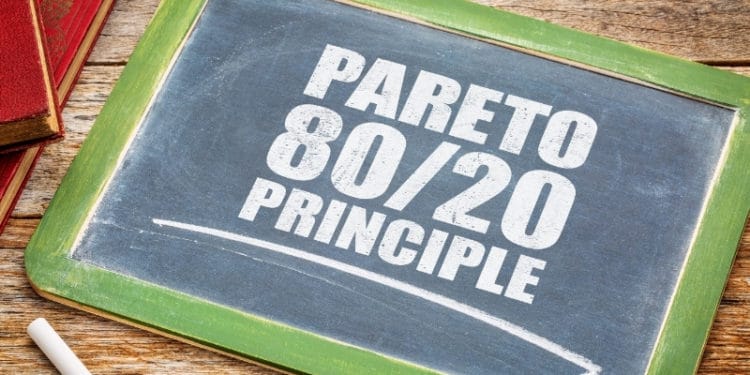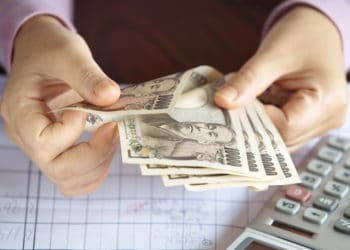We’ve all heard of the 80-20 rule referenced in everything from sports, economics to business and computing. For instance, 80% of a company’s profits typically come from 20% of its products or customers; 80% of all the world’s wealth is controlled by 20% of the people, and so on.
Although these are mostly unquantified generalizations, we do see a significant power dominance on one side over the other. It begs the question, does this rule have any influence on forex, and can it make better traders?
What is the Pareto principle?
The Pareto principle goes by several names like the Pareto law, Pareto distribution, Pareto rule, or the 80-20 rule. Vilfredo Pareto, who name the principle shares, was an Italian economist of the 1800s and early 1900s.
He began noticing the law in 1896. One of the first instances was how 20% of his native population owned 80% of the land. Eventually, countless other scenarios emerged following the same trend of power distribution.
We can look at the 80-20 rule in abundant ways:
- 20% of the input is responsible for 80% of the output.
- 80% of the effects come from 20% of the causes.
- 20% of the resources create 80% of the success.
Many theorists are firm believers that the Pareto law is never random. Importantly, the 80-20 ratio is approximate as it can alternatively be 70-30, 75-25, 90-10, 99-1, or any other combination where one number is significantly larger than its opposite.
When we look at examples below of this law in forex, we will observe these discrepancies aren’t necessarily 80-20 but do, nonetheless, show a power imbalance.
Examples of the Pareto principle working in forex
To fully appreciate this principle, let’s take a look at examples in forex:
95 % of traders lose money trading
This statement is a popular reference in much of the existing trading literature. Unfortunately, there isn’t any evidence-based research on this affirmation due to the decentralized structure of forex.
The closest evidence we could observe is with some primarily EU-based brokers that regulators mandate to state the percentage of losing traders. Here, we see the figures to be at least above 70% of losing traders on average.
Nonetheless, even though there isn’t any accurate and reliable data, this does tell us that trading is as challenging to excel in as other fields like entertainment and sports. While a difficult pill to swallow, only very few reach an elite level of consistent profits in the long run.
The success rate is low, which means that to stand out, one needs to trade differently from the rest and be armed with unconventional knowledge that provides an edge.
80% of your profit comes from 20% of your trades
Any trader aims to keep losses around or below a consistent amount and have winning positions marginally larger (whether twice, three times, or higher than the loss).
This is easier said than done, though it’s the simplest formula for profits. More importantly, the winning percentage can be lower than 50% if the rewards are large enough.
If we observe a trader’s performance over a year, for example, we may see their win rate around 30%, yet still showing a profitable equity curve. In this scenario, they would have technically lost 70% of their trades, but 30% of their positions were big enough to show a profit.
Now, this philosophy may not necessarily apply to every trader, but it could be an ‘aha’ moment for many regardless of whether trade intraday or swing.
Traders should focus 80% of their time on money, risk management, and psychology, and 20% on technical analysis
Anyone can go deep with technical analysis and strategies, though in reality, it is better to ‘dumb down’ what you know for simplicity purposes.
Many traders know quite a few trading strategies, but perhaps one of the reasons they struggle is due to strategy-hopping. Anyone can find success with an ‘average’ system if it contains solid risk and money management, and the trader has mastered their psychology.
Risk and money management involves understanding risk-to-reward, position-sizing, knowing your loss in monetary terms, dealing with losing streaks, etc. Psychology includes maintaining calm and discipline, never being over-confident and reckless, etc.
A strategy can sound good on a technical basis, but if it lacks the proper trader psychology and money/risk management, it will be difficult to perform consistently and profitably.
How can the Pareto principle help traders in forex?
This principle reinforces the idea of quality over quantity and that small inputs often have a noticeable and significant influence on a trader. Trading forex is a game of fine margins.
Human nature generally inclines on believing every unit of effort correlates to each success outcome, though we can see Pareto dispels this.
If someone feels as though they are struggling with trading, instead of changing 80% of things they do, it could just be a small 20% or a few aspects bringing them down. If we know that 90% of traders lose money, that means there is an evident educational gap or something that the 10% know, which is where we should be looking.
It may also mean those that lose follow traditional knowledge, which, while some of it is true, is never enough to be successful.
In another instance, if we believe profits generally come from a small portion of a trader’s positions, we should understand that the win percentage is mostly irrelevant. It’s all about the risk to reward.
Conclusion
The examples above scratch the surface of the Pareto principle at play. Traders can find countless other instances that may provide them with actionable insights and revelations. A trader can make do with little resources for much of their success or make slight tweaks in their efforts to promote greater outcomes.
The point of this article is to highlight how small things can often have the biggest impact.







